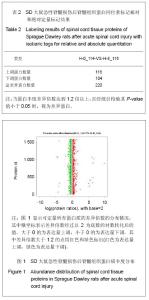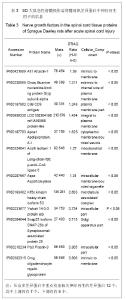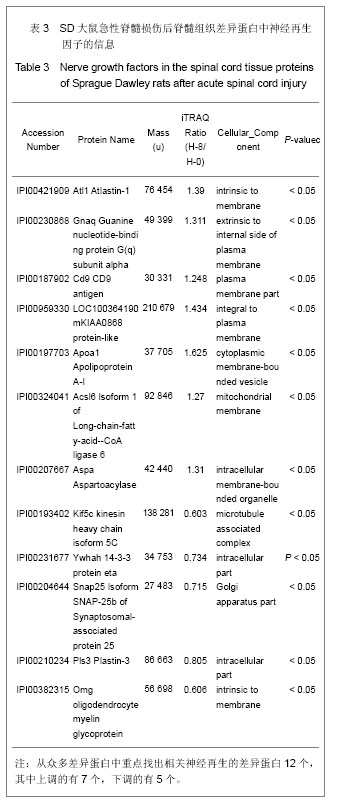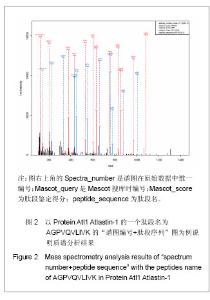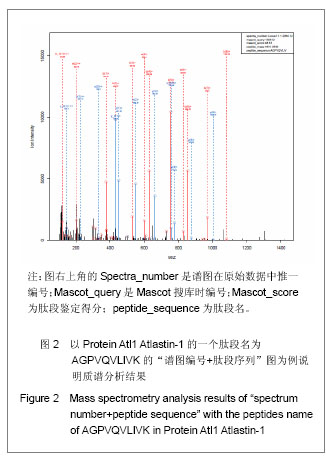| [1] Beattie MS,Hermann GE,Rogers RC,et al.Cell death in models of spinal cord injury. Prog Brain Res.2002; 137: 37-47.
[2] Pietraszkiewicz F,Tysiewicz-Dudek M.Epidemiology of spinal injuries in lubuskie province. Ortop Traumatol Rehabil.2010; 12(5):435-442.
[3] Emery E,Aldana P,Bunge MB,et al.Apoptosis after traumatic human spinal cord injury. J Neurosurg.1998; 89: 911–920.
[4] Wyndaele M,Wyndaele JJ.Incidence, prevalence and epidemiology of spinal cord injury:what learns a worldwide literature survey.Spinal Cord. 2006;44(9):523-529.
[5] Tsutsumi S,Ueta T,Shiba K,et a1.Effects of the second national acute spinal cord injury study of hish-dose methylprednisolone therapy on acute cervical spinal cord injury-results in spinal injuries center. Spine.2006; 31(26):2992-2996.
[6] Wasinger VC,Cordwell SJ,Cerpa-Poljak A, et a1. Progress With geneproduct mapping of the Mollicutes: Mycoplasma genitalium. Electrophoresis.1995;16: 1090-1094.
[7] Gonealves A,Benueci F.Clinical application of proteomics in breast cancer:state of the art and perspectives.Med Princ Praet.2011;20(1):4-18.
[8] Lubieniecka JM,Streijger F,Lee JH,et al.Biomarkers for severity of spinal cord injury in the cerebrospinal fluid of rats. PLoS One. 2011; 6(4): e19247.
[9] Zhang J. Proteomics of human cerebrospinal fluid -the good, the bad, and the ugly.Proteomics Clinical applications. 2007;1: 805–819.
[10] Adib-Conquy M,Cavaillon JM.Stress molecules in sepsis and systemic inflammatory response syndrome. FEBS Letters. 2007; 581: 3723-3733.
[11] Tilleman K, Deforce D, Elewaut D.Rheumatology: a close encounter with proteomics. Rheumatology (Oxford).2005;44: 1227-1226.
[12] Castagnola M,Piceiotti PM,Messana I,et a1.Potential applications of human saliva as diagnostic fluid.Acta Otorhinolaryngol Ital.2011;3l(6):347-357.
[13] Wise Yong,胥少汀,苟三怀.大剂量甲基强的松龙治疗急性脊髓损伤[J]. 中国脊柱脊髓损伤杂志,2000,10(5):304-305.
[14] Costa S,Planchenault T,Charriere-Bertrand C,et al.Astroglial permissivity for neuritic outgrowth in neuron-astrocyte cocultures depends on regulation of laminin bioavailability. Glia.2002;37:105-113.
[15] Hu J,Qian J,Borisov O,et al.Optimized proteomic analysis of a mouse model of cerebellar dysfunction using amine-specific isobaric tags. Proteomics. 2006; 6(15):4321-4334.
[16] Ostasiewicz P,Zielinska DF,Mann M,et al.Proteome, phosphoproteome, and N-glycoproteome are quantitatively preserved in formalin-fixed paraffin-embedded tissue and analyzable by high-resolution mass spectrometry.J Proteome Res. 2010; 9(7):3688-3700.
[17] Ross PL,Huang YN,Marchese JN,et al.Multiplexed protein quantitation in Saccharomyces cerevisiae using amine-reactive isobaric tagging reagents. Mol Cell Proteomics.2004; 3(12):1154-1169.
[18] Jain MR,Bian S,Liu T,et al.Altered proteolytic events in experimental autoimmune encephalomyelitis discovered by iTRAQ shotgun proteomics analysis of spinal cord. Proteome Sci. 2009; 7:25.
[19] Hu YE, Mao JH, Zhu Y, et al. Nerve growth factor pretreatment against glutamate-induced hippocampal neuronal injury: action mechanism of phosphatase and tensin homologue deleted on chromosome 10. Neural Regen Res. 2010;5(1):5-9.
[20] Shi ED, Wang BC, Sun QS. Nerve growth factor and injured peripheral nerve regeneration. Neural Negen Res 2008; 3(11): 1273-1276 .
[21] Sang CL,Tai GY,Yong Y,et al.Analysis of spinal cord proteome in the rats with mechanical allodynia after the spinal nerve injury. Biotechnol Lett.2003; 25(24): 2071-2078.
[22] Lin R, Roseborough G,Dong Y, et al.DNA damage and repair system in spinal cord ischemia.J Vasc Surg. 2003;37 : 847-858.
[23] Grant JE,Hu J,Liu T,et al.Post-translational modifications in the rat lumbar spinal cord in experimental autoimmune encephalomyelitis.J Proteome Res. 2007; 6(7):2786–2791.
[24] Brandel JP.Clinical aspects of human spongiform encephalopathies, with the exception of iatrogenic forms. Biomed pharm acother.1999;53(1) : 14-18.
[25] Col lins S,Boyd A,Fletcher A,et al.Creutzfeldt-Jakob disease: diagnosis utility of 14-3-3 protein immunodetection in CSF. J Clin Neurosci.2000;7(3): 203-208.
[26] Hashiguchi M,Sobue K,Paudel HK.14-3-3 Zet a is an efector of Tau protein phosp horylation.J Biol Chem.2000;275( 33) : 25247-25254.
[27] Sekine Y, Takeda K, Ichijo H. Ichijo, The ASK1-MAP kinase signaling in ER stress and neurodegenerative diseases, Curr Mol Med. 2006, 6: 87-97.
[28] Kawamoto Y, Akiguchi I, Nakamura S,et al.Li nks 14-3-3 proteins in Lewy bodies in Parkinson disease and diffuse Lewy body disease brains.J Neuropathol Exp Neurol, 2002, 61( 3) : 245-253.
[29] Takeda K, Matsuzawa A, Nishitoh H, et al. Roles of MAPKKK ASK1 in stress- induced cell death.Cell Struct Funct. 2003;28: 23-29.
[30] Yang C, Ren Y, Liu F, et al.Ischemic preconditioning suppresses apoptosis of rabbit spinal neurocytes by inhibiting ASK1–14-3-3 dissociation. Neuroscience Letters.2008: 267-271
[31] Komuro Y,Takeda K,Ichijo H.[Regulatiory mechanism of cell dealth through ASK1].Seikagaku.2004;76(11):1458-1462.
[32] Masutani H, Ueda S, Yodoi J. The thioredoxin system in retroviral infection and apoptosis.Cell Death Differ.2005;12 (1):991-998.
[33] Shao LE, Tanaka T, Gribi R, et al. Thioredoxin-related regulation of NO/NOS activities, Ann NY Acad Sci. 2002;962: 140-150.
[34] Song JJ,Rhee JG,Suntharalingam M,et al.Role of glutaredoxin in metabolic oxidative stress. Glutaredoxin as a sensor of oxidative stress mediated by H2O2.J Biol Chem. 2002;277:46566-46575.
[35] Park HS, Cho SG, Kim CK,et al.Heat shock protein hsp72 is a negative regulator of apoptosis signal-regulating kinase 1, Mol Cell Biol.2002;22 :7721-7730.
[36] Goldman EH,Chen L, Fu H. Activation of apoptosis signal-regulating kinase 1 by reactive oxygen species through dephosphorylation at serine 967 and 14-3-3 Dissociation. J Biol Chem.2004;279 :10442-10449.
[37] Wang P, Cao X, Nagel DJ, et al.Nagel, Guoyong Yin, Activation of ASK1 during reperfusion of ischemic spinal cord, Neurosci Lett. 2007;415:248-252.
[38] Liu Y, Yin G, Surapisitchat J, et al.Surapisitchat. Laminar flow inhibits TNF-induced ASK1 activation by preventing dissociation of ASK1 from its inhibitor 14-3-3.J Clin Invest. 2001;107:917-923. |
